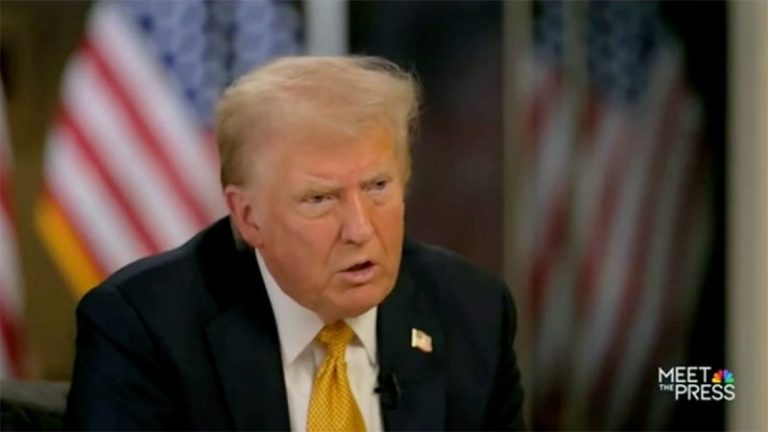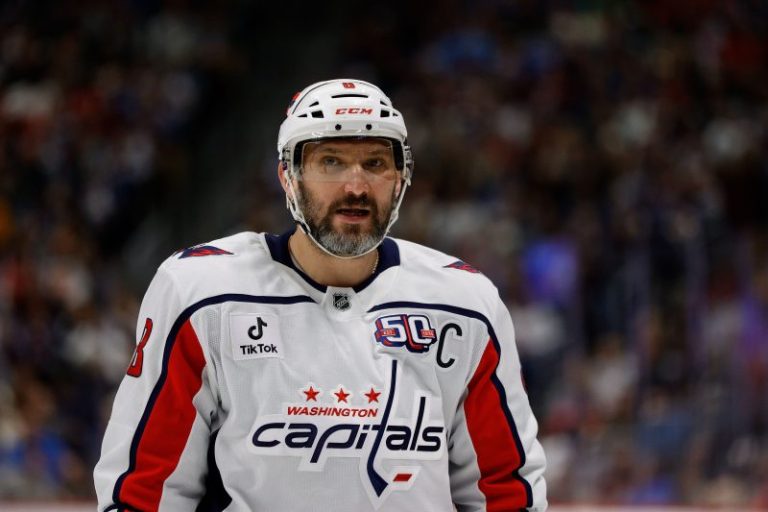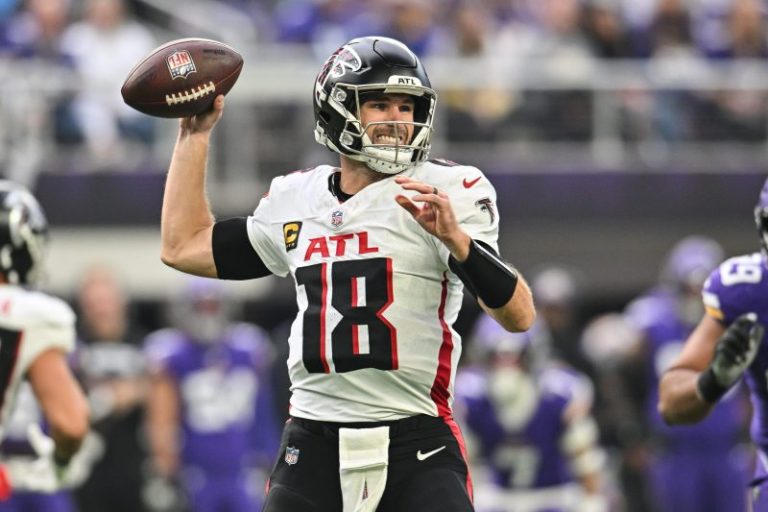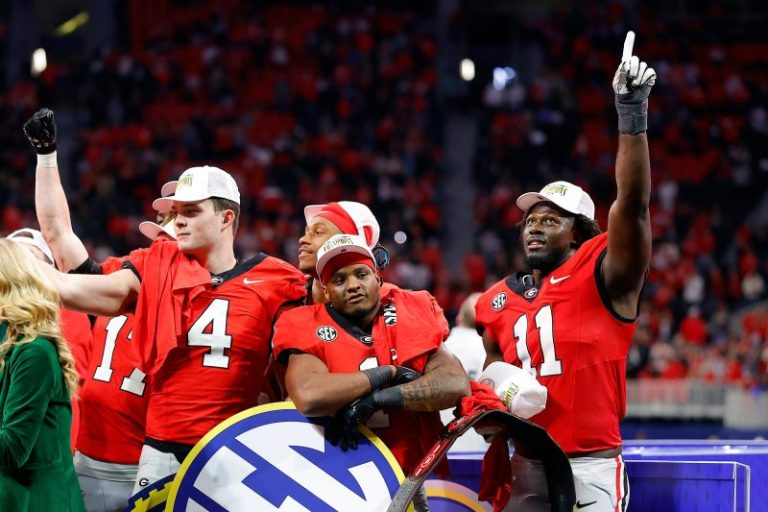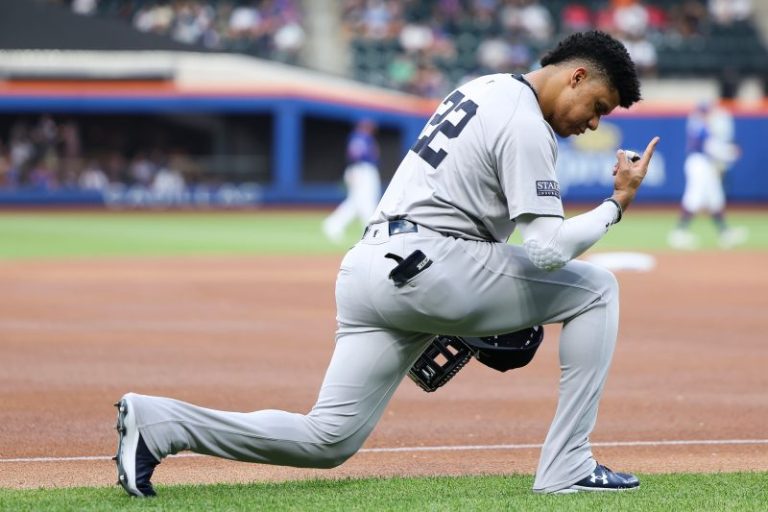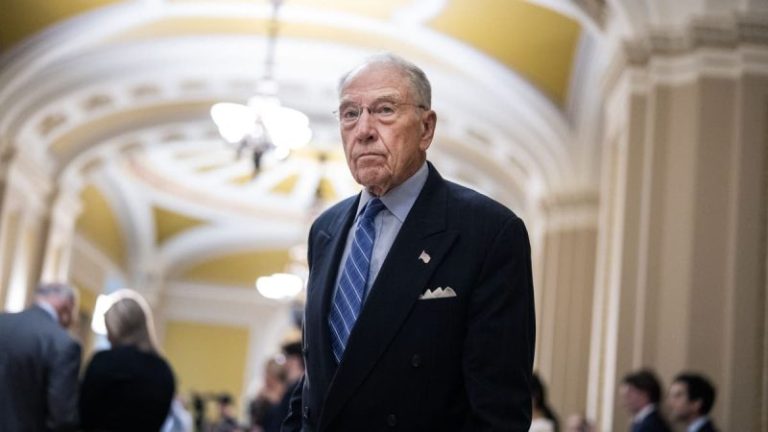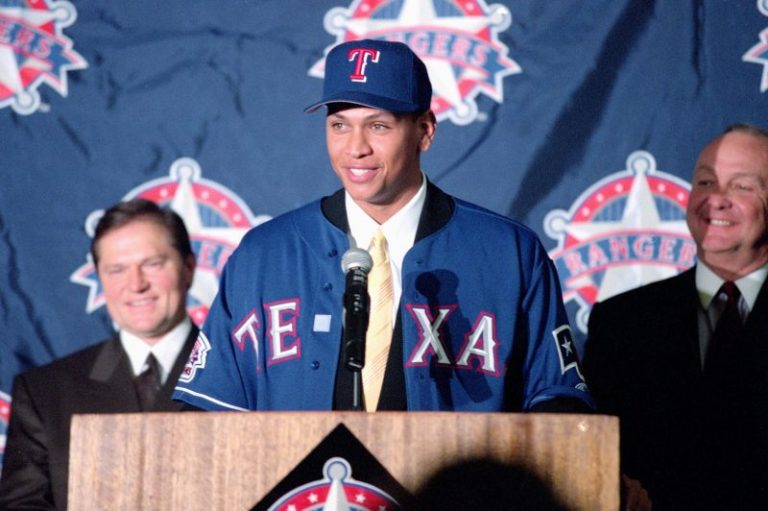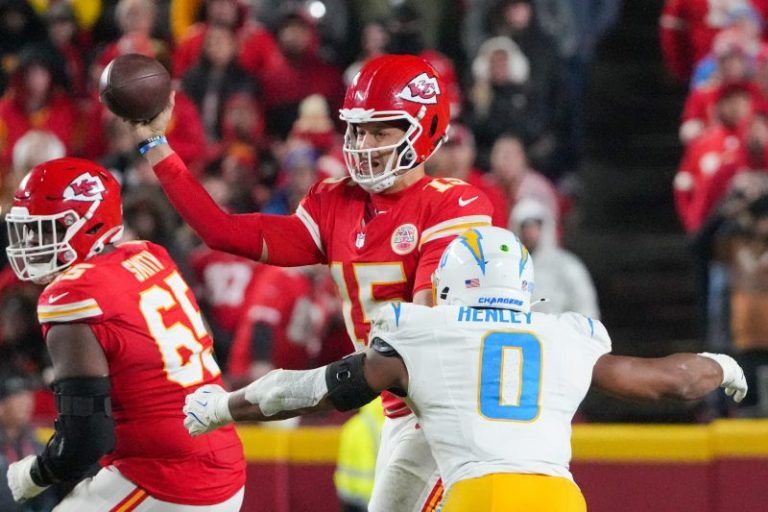The biggest contract in professional sports history is only the prelude to a wild winter of spending.
With Juan Soto, Major League Baseball’s No. 1 free agent, off the board thanks to a 15-year, $765 million agreement with the New York Mets, a stable of stars who will attract more than $1 billion in contracts remains.
And with almost every team pointing toward trying to contend, the market will move very quickly. With that, USA TODAY Sports breaks down the top 120 free agents, from the most desired to those reasonably expected to sign a major league contract. Rankings based on projected future performance and perceived market value:
DODGERS WIN WORLD SERIES: Celebrate with this commemorative coffee table book!
Ages on April 1, 2025
Follow every MLB game: Latest MLB scores, stats, schedules and standings.
1. Juan Soto (26, OF, Yankees)
One of the most elite free agents in baseball history, thanks to his age, production similar to Hall of Famers like Ted Williams and Ken Griffey Jr. and an epic platform year in which he hit 41 home runs and only burnished his excellent postseason credentials. He will set a free agent record for largest contract, non-Ohtani division.
SIGNED: 15 years, $765 million with Mets, Dec. 8.
2. Blake Snell (32, LHP, Giants)
This time around should go much better for Snell, who languished on the market until March and settled for a $64 million guarantee for two years. He wisely opted out after striking out a career-high 12.5 per nine innings in 20 starts and throwing a no-hitter, for good measure. The Giants badly need him back, but there will be competition.
SIGNED: Five years, $182 million, with Dodgers, Nov. 26.
3. Corbin Burnes (30, RHP, Orioles)
Burnes vs. Snell is an interesting subplot on this market: Both are Scott Boras clients, both have a Cy Young Award on the shelf and both should have nine-figure deals attached to their name come February. After winning the ’21 NL Cy with a 2.94 ERA and 1.63 FIP in just 167 innings, Burnes has posted seasons of 202, 193 ⅔ and 194 ⅓ innings pitched since, while largely maintaining that dominance.
4. Alex Bregman (31, 3B, Astros)
Can Jim Crane casually let another core player to their dynasty walk as the product withers? With Bregman’s $100 million extension expired, he’ll take his first Gold Glove and a rousing endorsement from Crane favorite Jose Altuve to the market. A career .848 OPS (132 adjusted) will bring plenty of suitors – and require action lest Bregman join Carlos Correa and George Springer as ex-Astros.
5. Pete Alonso (30, 1B, Mets)
To what extent is Alonso’s fate tied to that of the No. 1 player on this list? It’s unclear if Mets owner Steve Cohen will make a drive for Soto, and even more intriguing is how badly he wants Alonso back and whether new baseball chief David Stearns is willing to bid irrationally to keep him. The price probably went up when Alonso – who hit 226 homers in six seasons – sparked an epic playoff run with a season-saving shot at Milwaukee.
6. Max Fried (31, LHP, Braves)
Welcome to the first non-Boras client on this list. Fried has had forearm flareups the past two seasons but his stuff still plays just fine and his mastery of a six-pitch mix only seems to grow each season. A career 3.07 ERA and an elite 140 adjusted ERA.
7. Teoscar Hernández (32, OF, Dodgers)
He played on a one-year, $23 million, heavily-deferred make-good deal and Hernández made plenty good. He hit 33 homers, posted an .840 OPS, made his second All-Star team and then hit three homers and drove in a dozen runs in the Dodgers’ World Series run. L.A. loves Teo, but it will cost a premium to bring him back.
8. Willy Adames (29, SS, Brewers)
He can be a linchpin for a playoff club, and hit 31, 24 and 32 homers the past three seasons. Yet Adames’ market might be tempered a bit by how clubs project that bat will age. He has a lifetime .322 OBP and those home runs came with 166, 165 and 173 strikeouts the past three years. Still, he’s an absolute dude that can change the culture of a middling team.
SIGNED: Seven years, $182 million with Giants, Dec. 7.
9. Anthony Santander (30, OF, Orioles)
A perfectly timed platform year, as Santander slammed 44 homers – third in the majors and most by a switch-hitter – with an .814 OPS. While his age and longer career sample (.307 lifetime OBP) might affect the length of his deal, Santander should have multiple suitors for a three- to five-year deal for a solid annual value.
10. Gleyber Torres (28, INF, Yankees)
Maybe the most maddening player on this list, as Torres was a two-time All-Star by 22, dipped below league average hitter two years later and finally found his level, it seems, with a career 112 adjusted OPS. Last year was a similar microcosm: Lousy first half, great second half, clutch playoff performance marred by a misplay or two. Highest-ranked player on this list not to receive a qualifying offer among those eligible.
11. Nathan Eovaldi (35, RHP, Rangers)
Eovaldi declined his $20 million player option, and for good reason: He’s still among the game’s most reliable starters even as he couldn’t quite replicate his 2023 performance, when he was the Rangers’ World Series hero. Still, he’s averaged 27 starts, 152 innings pitched, a 3.76 ERA and 1.16 WHIP the past four seasons. One more big bite at the free agency apple.
12. Yusei Kikuchi (33, LHP, Astros)
Houston gave up multiple prospects to rent Kikuchi and he shined as an Astro, posting a 2.70 ERA in 10 starts, and the Astros won the first nine of them. Will suitors bid on that guy, or the lefty who struggled to a 4.75 ERA in 22 starts for Toronto?
SIGNED: Three years, $63 million with Angels, Nov. 25.
13. Tyler O’Neill (29, OF, Red Sox)
Perhaps some of it was Fenway Park, but O’Neill slugged 31 homers in 113 games, and is just three seasons removed from a 34-homer season in St. Louis. Not much pop like that, younger than 30, no less, on the market.
SIGNED: Three years, $49.5 million with Orioles, Dec. 7.
14. Jack Flaherty (29, RHP, Dodgers)
After two trades and four teams in two years, Flaherty may yet find his permanent home. His 3.17 ERA in 162 innings for Detroit and Los Angeles was his best since 2019, and while he had a bit of a good start/bad start thing going in the postseason, his Game 1 gems in the NLCS and World Series were pretty good platforms.
15. Tanner Scott (30, LHP, Padres)
The best reliever on the market isn’t your standard ninth-inning guy, although Scott did save 18 games in Miami before a trade to San Diego. No, his greater appeal is locking down elite portions of the opposing lineup regardless of inning, and his 188 strikeouts over 150 innings with a 1.05 WHIP the past two seasons are a delectable sample.
16. Christian Walker (34, 1B, Diamondbacks)
As the Best First Base Option Not Named Pete Alonso, Walker will be in solid demand this year, perhaps even by the Polar Bear’s former team. He’s coming off three excellent seasons in Arizona, with home run totals between 26 and 36 and adjusted OPS marks from 121 to 125. A really good veteran fit for contenders missing a last piece.
17. Walker Buehler (30, RHP, Dodgers)
And so begins the dice-rolling portion of our rankings, so strap in for the next 100 or so. Buehler hit health and performance potholes in his return from a second Tommy John surgery, but he’s also the only one holding a pose the entire winter – after striking out two on one days’ rest to close out the World Series.
18. Ha-Seong Kim (29, INF, Padres)
Kim had 5- and 6-WAR seasons before injuries limited him to 121 games this season. Yet his age and his peak – think 17 homers, 38 steals and multi-position excellence – are worth betting on.
19. Sean Manaea (33, LHP, Mets)
After years of short-term commitments and opt-ins and outs, Manaea finally had a platform season worth going to the market on, making 32 starts with a career-best 3.47 ERA, 1.08 WHIP and consecutive playoff wins against the Phillies and Dodgers in the NLDS and NLCS.
20. Shane Bieber (29, RHP, Guardians)
What to do with Biebs? He’ll be almost a year removed from Tommy John surgery by Opening Day and a standard one-year commitment with an option to protect both team and player would make sense. But this is just the first TJ for Bieber, and he should be healthier than he’s been since winning the 2020 AL Cy Young Award. Maybe it’s just a pillow contract, but there’s runway for both a team and the player to get creative in a bigger way.
SIGNED: One year, $14 million, with Guardians, Dec. 6.
21. Carlos Estévez (32, RHP, Phillies)
The capital-C closer has more or less gone the way of the sacrifice bunt, but Estévez comes as close as anyone to filling that bill. He has an 86% save percentage the past two seasons and cut his ERA from 3.90 to 2.45 in 2024, even as his strikeouts per nine innings fell from 11.3 to 8.2.
22. Nick Pivetta (32, RHP, Red Sox)
The man is a paradox: A 10.0 career strikeouts per nine – paired with a 4.76 ERA. A career-low 2.2 walk rate in 2024 – but an adjusted ERA that was barely league average. Yet Pivetta’s right arm is one worth wagering on, as he’s averaged better than a strikeout per inning three of the last four seasons and two years ago pitched a career-high 179 ⅔ innings. A pretty good bet someone will believe they can unlock another level on his elite curveball and shed the “enigmatic Canadian” tag for good.
23. Jeff Hoffman (32, RHP, Phillies)
An All-Star in 2024 who faded in September and in the playoffs, Hoffman nonetheless represents one of the better relief arms in this class. Had a 1.12 ERA in first half, 3.81 in the second, but had a 2.28 ERA, 0.94 WHIP and 2.54 WHIP in two seasons with Phillies.
24. Justin Verlander (42, RHP, Astros)
He’s 38 wins from 300 and three years from 45, the age he’d at least like to try to pitch through. Injuries limited him to 90 ⅓ innings last season and so his 2025 option did not vest at $35 million. How much are teams now willing to pay for a Hall of Famer now more likely to give them five really good innings 20 to 25 times a year?
25. Luis Severino (31, RHP, Mets)
One of the great “pillow contract” success stories in recent years, as Severino admittedly was one of the worst pitchers in baseball in 2023 but found success across town at Citi Field. Most notably, he’s healthy: Severino’s 31 starts and 182 innings pitched were his most since 2018, his second consecutive All-Star season.
SIGNED: Three years, $67 million, with Athletics, Dec. 5.
26. Blake Treinen (36, RHP, Dodgers)
He’s been a Dodger for five years now, minus the 2023 campaign he missed due to rotator-cuff surgery, and finished with a flourish: 2 ⅓ scoreless innings to enable L.A.’s wild comeback in Game 5 of the World Series. Perhaps both parties realize they’re best when together, as Treinen has a 2.29 ERA in 154 career innings as a Dodger.
SIGNED: Two years, $22 million with Dodgers, Dec. 8.
27. Matthew Boyd (34, LHP, Guardians)
A litany of arm issues limited him to between eight to 15 starts the past four years, but Boyd just might parlay a playoff platform into a nice payday. He did not pitch for Cleveland this season until Aug. 8, then fashioned a 2.72 ERA in eight starts. He followed up with three playoff starts in which he gave up just one earned run in 11 ⅔ innings. A multiyear deal is likely in the offing.
SIGNED: Two years, $29 million with Cubs, Dec. 2.
28. Nick Martinez (34, RHP, Reds)
Martinez performed excellently in a swing role in his only year in Cincinnati and thus declined his 2025 player option. He covered 142 innings while making 16 starts, maintaining a 1.02 WHIP and walking barely one batter per nine innings. Well-suited to the versatility modern clubs prefer out of their best arms.
SIGNED: Accepted one-year, $21.05 million qualifying offer from Reds, Nov. 18.
29. José Quintana (36, LHP, Mets)
Like Manaea and Severino, Quintana quaffed readily from the fountain of youth in Queens, making 31 starts and topping 170 innings for the first time since 2019. Given his age, that may not get him much of a raise from the $13 million he made the past two seasons, but Quintana will certainly have options.
30. Paul Goldschmidt (37, 1B, Cardinals)
There’s a first baseman on the market who hit 22 homers with a .302 OBP and a career-high tying 173 strikeouts. Does it change the impression if it turns that is indeed Goldschmidt, who just two years ago was named NL MVP? Yet in 2024, Goldschmidt slipped below league average as a hitter, though he was still worth 1.3 WAR. His market will likely reflect his reclamation project status, but the right situation – perhaps in his Houston hometown? – could unearth more production.
31. Kirby Yates (38, RHP, Rangers)
A great comeback story rolls on, as Yates missed all but nine games of 2021-22 with injuries but made 61 appearances each of the past two seasons, earning All-Star honors, posting a 1.17 ERA and saving 33 games in Texas last year. Perhaps a little more wedded to the ninth than other relievers, but plenty of contenders would be fine with that.
32. Clay Holmes (32, RHP, Yankees)
Kind of the AL equivalent to Jeff Hoffman, as Holmes went from All-Star to late-season enigma. Yet Holmes did rally very nicely in the postseason, adjusting to a set-up role after he was moved off the closer job and posting 11 scoreless outings in 13 appearances, including five World Series appearances in which he gave up just one hit and two walks.
SIGNED: Three years, $38 million, with Mets.
33. Max Kepler (32, OF, Twins)
A handful of leg injuries limited Kepler to a career-low 105 games and eight home runs; he’d hit 24 in 2023 and 36 in the juiced-ball year of 2019. With various ups and downs throughout his career, Kepler lands just north of a league average hitter – a 102 career adjusted OPS – with the ability to play a serviceable corner outfield.
34. Anthony Rizzo (35, 1B, Yankees)
New York declined Rizzo’s $17 million team option, and now the sides must debate whether to renew acquaintances a third time after his 2021 trade from the Cubs. It’s complicated: Rizzo and franchise player Aaron Judge are close friends and clubhouse leaders, but Rizzo has been limited to 99 and 92 games (posting a .673 OPS) the past two seasons and the club needs roster flexibility.
35. Max Scherzer (40, RHP, Rangers)
How much does Scherzer have left? His nine starts in 2024 might not be the best gauge, as Scherzer returned from back surgery and then suffered from shoulder fatigue and a hamstring injury. He’s still effective – a 3.16 ERA and 1.03 WHIP in 59 starts since 2022 – but the body is sometimes not willing. A solid guarantee and bankable incentives should create a good match with a contender.
36. Hye-Seong Kim (25, 2B, Kiwoom Heroes)
The lone player from Korea or Japan known to be certainly coming to the majors, Kim is reportedly an adept defender with decent power who impressed the Dodgers in an exhibition game last March. The domestic second base market certainly can use a vital, still-developing player.
37. Michael Lorenzen (33, RHP, Royals)
This may not be the year Lorenzen finds the security of a multiyear commitment, but that doesn’t mean he won’t be valued by upper-division squads. Lorenzen made playoff rosters in Philadelphia and Kansas City after midseason trades the past two seasons, and logged a 3.31 ERA – 121 adjusted – over 130 ⅓ innings for Texas and the Royals last year.
38. Carlos Santana (38, 1B/DH, Twins)
As if the man wasn’t valued enough already for his elite on-base skills and veteran savvy, now Santana will take a Gold Glove with him to the market. At 38, he was a 2.5 win player who drilled 23 homers. Always room for an elite first base glove that can switch hit.
39. Joe Ross (31, RHP, Brewers)
Perhaps there’s a little projection with this one, but after years of injuries and false starts, Ross seemed to find a groove as a swingman in Milwaukee last year, his 3.77 ERA backed up by a 3.83 FIP in 74 innings, with just nine homers allowed. Seems like betting on the next step would be wise.
40. Michael Conforto (32, OF, Giants)
Not a totally lost two years in San Francisco as Conforto’s first grab at free agency was truncated by a shoulder injury that sidelined him all of 2022. From ’23 to ’24, he boosted his homers from 15 to 20, his hard-hit ball rate from 39.8% to 46% and played in 130 games, most since 2019. Are suitors convinced he’s an everyday player?
SIGNED: One year, $17 million with Dodgers, Dec. 8.
41. Andrew Heaney (33, LHP, Rangers)
Was almost exactly a league-average starter in his two years in Texas, which included a World Series championship.
42. Jurickson Profar (32, OF, Padres)
Finally an All-Star at 31 and then one of the driving forces behind the game’s hottest second half team. Profar easily had his most productive season – 3.7 WAR, 24 homers both career highs – and the question now is whether he’s a snug fit in San Diego or if he could take his revamped game elsewhere.
43. Joc Pederson (32, OF, Diamondbacks)
What a sneaky-good year: 23 homers, a 151 adjusted OPS and nearly 3 WAR, highest since 2019. Pederson took just 42 plate appearances against left-handers, illustrating the Diamondbacks’ disciplined and effective usage.
44. Alex Verdugo (28, OF, Yankees)
Athletic, young, useful, yet still inconsistent. Verdugo played in the game’s two most demanding markets and lived to tell about it, although his tale of two halves in New York (.764 OPS through June 2, .575 thereafter) will temper some market enthusiasm.
45. Kyle Gibson (37, RHP, Cardinals)
Innings-eater deluxe back on the market seeking his fourth team in as many years. They’ll know what they’re getting: Gibson posted 167 ⅔, 192 and 169 ⅔ innings pitched with Philadelphia, Baltimore and St. Louis, with a 4.68 ERA and 1.33 WHIP. Ideal for emerging teams with young starters.
46. Tommy Pham (37, OF, Royals)
The human victory cigar lit up another postseason, going 5 for 11 for Kansas City in the ALDS and boosting his career postseason OPS to .823 in 136 plate appearances. Yet his finer work might have come for the sad-sack White Sox, where he maintained a .710 OPS for the worst team in modern baseball history.
47. Charlie Morton (41, RHP, Braves)
It’s likely Braves or the easy chair for the 17-year veteran who posted for 30 starts in his age-40 season.
48. Jose Iglesias (35, INF, Mets)
This space has long respected Iglesias, who mysteriously had to scamper for minor-league deals in recent years despite solid production and the wisdom of a veteran. But after a hit single and a stunning Mets renaissance after he was added to the roster in June, Iglesias finished second in WAR (3.1) for the NL runner-ups and shouldn’t need to wait until March for a job. OMG = Only Major-League Guarantees.
49. Spencer Turnbull (32, RHP, Phillies)
Enjoyed a nice renaissance in Philly – posting a 2.65 ERA and a 1.04 WHIP on the fringes of their starting rotation – before a lat strain ended his season before July. A useful arm to augment any staff.
50. A.J. Minter (31, LHP, Braves)
Hip surgery ended his season in September, but the Night Shift alum was solid in the 39 games he did pitch, with a 1.02 WHIP and 35 strikeouts. Topped 60 appearances four times in seven full seasons.
51. Colin Rea (34, RHP, Brewers)
Rea landed on the market somewhat surprisingly, with the Brewers placing him on waivers and then declining his $5.5 million option. He’ll probably do about as well on the market, as a solid back-end rotation option that won 12 games, started 27 and gave Milwaukee 167 ⅔ innings last year.
52. Kenley Jansen (37, RHP, Red Sox)
Still finds a way to get it done, as he converted 56 of 64 save chances (88%) in two years with Boston. Just 31 saves from 478 in his career, tying Lee Smith for third place on the all-time list.
53. Martín Pérez (33, LHP, Padres)
Flourished after leaving Pittsburgh, as one does, posting a 3.46 ERA in 10 starts with San Diego after a 5.20 mark in 16 outings with Pirates. Just two years removed from a 196-inning, All-Star season, but bidders should temper their enthusiasm for a veteran with a 1.45 career WHIP.
54. David Robertson (39, RHP, Rangers)
He turned down a player option because, even though he turns 40 in April, Robertson believes he can do better on the market. And who’s to doubt him? Robertson’s 72 innings were a career high, and he maintained a 1.11 WHIP and 2.65 FIP.
55. Andrew Kittredge (35, RHP, Cardinals)
A one-time All-Star, Kittredge was solid in his only year with St. Louis (2.80 ERA, 1.13 WHIP). Not the strikeout guy he was in Tampa Bay, but plenty effective.
56. Trevor Williams (32, RHP, Nationals)
Williams enjoyed a second-year renaissance in Washington, posting a 2.03 ERA and slashing his home runs allowed from 34 (2.1 per nine innings) to three (0.4). A shoulder injury limited Williams to 13 starts and 66 2/3 innings, but he did return at year’s end to make two starts and is an adequate twice-around-the-order back-ender.
57. Harrison Bader (30, OF, Mets)
Energetic and athletic, Bader has fallen off at the plate, his adjusted OPS tumbling from 114 in 2021 to 80 the past three seasons. Still has defensive value as an extra outfielder or platoon guy against left-handers.
58. Kyle Higashioka (34, C, Padres)
Ostensibly a throw-in in the Juan Soto blockbuster, Higashioka added power to his game, socking 17 homers and earning the lion’s share of playing time behind the plate in San Diego. A .212 career hitter but a valued receiver and veteran presence.
SIGNED: Two years, $13.5 million with Rangers, Dec. 2.
59. Jesse Winker (31, OF, Mets)
Relegated to a minor-league contract last February, Winker performed well enough for Washington to flip him to New York, where he seized folk and playoff hero status. He backed up his solid 118 adjusted OPS with seven hits in 22 postseason at-bats, and can still play a decent left field.
60. Travis d’Arnaud (36, C, Braves)
A significant surprise Atlanta did not pick up d’Arnaud’s $8 million option, given his clubhouse leadership and decent production over the years. An All-Star in 2022, d’Arnaud might be most effective in a timeshare but would bring plenty to a contending team.
SIGNED: Two years, $12 million with Angels, Nov. 12.
61. Chris Martin (38, RHP, Red Sox)
This might be the last call for the 6-foot-8 Texan, who was limited to 44 ⅓ innings but still struck out 50 and yielded a 1.13 WHIP. Says he’ll likely retire after 2025.
62. Aroldis Chapman (37, LHP, Pirates)
Unlike 2023, when Chapman was dealt from Kansas City to Texas and won a World Series, the lefty reliever was marooned in Pittsburgh all year, during which he posted a 1.35 WHIP, second-worst in his 15-year career. Velocity on his sinker and four-seam fastball ticked down from 2023 (101.1, 99 mph, respectively to 2024 (99.8, 97.8).
SIGNED: One year, $10.75 million with Red Sox, Dec. 3.
64. Josh Bell (32, 1B, Diamondbacks)
Not a great year for the 6-foot-4 slugger, whose .720 OPS was his lowest in a full season, yet Arizona still saw fit to acquire him from Miami. Nineteen homers, 23 doubles and league-average OPS will always have a home.
65. Tommy Kahnle (35, RHP, Yankees)
His two years in New York marked a nice career renaissance, as he struck out 10.2 batters per nine innings and posted a 179 adjusted ERA. Played a crucial role in postseason, posting eight scoreless outings until giving up the tying and go-ahead runs in World Series Game 5.
66. Jason Heyward (35, OF, Astros)
He’ll get another World Series ring, as the Dodgers released him toward the end of August, yet he still provided a nice boost in his six weeks with Houston. Heyward still has the juice defensively, as he batted .211 with a 98 adjusted OPS yet was still worth 1.2 WAR in 87 games.
67. Randal Grichuk (33, OF, Diamondbacks)
Still a potent outfield platoon force, as he hit 12 homers with an .875 OPS, including a .914 mark against lefties.
68. Danny Jansen (29, C, Red Sox)
A rough few seasons marred by injury and his walk year was no different. A trade from Toronto to Boston did not yield any extra production from the Fenway factor (his OPS dropping from .671 to .623). Yet Jansen is young for a free agent catcher and will try to sell suitors on the fact that just two years ago, he was a 3-win player with an .855 OPS.
SIGNED: One year, $8.5 million with Rays, Dec. 6.
69. Buck Farmer (34, RHP, Reds)
Averaged 66 appearances the past two years and maintained a 3.64 ERA and 8.6 strikeouts per nine in that stretch.
70. Scott Alexander (35, LHP, Athletics)
Held lefties to a .161 average, .419 OPS and zero home runs in 67 plate appearances.
71. Yimi Garcia (34, RHP, Mariners)
Garcia dominated in Toronto, striking out 42 in 30 innings, but struggled in 10 games after a midseason trade to Seattle before getting shut down with right elbow inflammation.
72. Kiké Hernández (33, INF/OF, Dodgers)
Simply one of the greatest postseason players of all time, Hernández managed to tread water during the regular season, batting .229 with an 85 adjusted OPS but logging 1.2 WAR thanks to his defensive acumen and versatility. But oh, that postseason: An .808 OPS and two homers in 14 games, and a pair of rally-starting hits in the decisive World Series Game 5.
73. Carson Kelly (30, C, Rangers)
Just a little better than a replacement-level backstop, Kelly fared better in Detroit last season (.716 OPS) than after a July trade to Texas (.634)
74. Justin Turner (40, INF, Mariners)
Word is J.T. is not yet ready to hang ‘em up, and the veteran can still bring value: A .354 OBP and 114 adjusted OPS for Toronto and Seattle. His 11 homers were his fewest since 2014.
75. Lance Lynn (37, RHP, Cardinals)
Yet another “will he retire?” situation, although Lynn still gutted through 23 starts and 117 ⅓ innings with a 3.84 ERA. Might be challenging to match up a contending team with one that has low-end innings-eating needs, however.
76. Jacob Stallings (35, C, Rockies)
A perfect timeshare candidate, as he produced a career-best .357 OBP and .810 OPS with nine homers in 81 games.
SIGNED: One year, $2 million with Rockies, Nov. 20.
77. Danny Coulombe (35, LHP, Orioles)
A moderate surprise the Orioles turned down Coulombe’s 2024 option, as he was one of the AL’s most reliable lefties the past two seasons (2.56 ERA, 0.95 WHIP). Coulombe did have June surgery to remove bone spurs from his throwing elbow, though he did return to post four scoreless outings in September, plus one more in the wild-card series.
78. Gio Urshela (33, INF, Braves)
A lifesaver in Atlanta this year after Austin Riley’s injury, Urshela proved he can be a valued part-time or bench contributor and reliable defensive presence.
79. Lucas Sims (30, RHP, Red Sox)
Teams hope to capture Sims’ 10.4 career strikeouts per nine innings, and not the 6.43 ERA he produced in 15 games after a trade from Cincinnati to Boston.
80. Mark Canha (36, OF, Giants)
A deadline trade acquisition the past two seasons, Canha has churned through the Mets, Brewers, Tigers and Giants, producing a .350 OBP and 104 adjusted OPS all the while.
81. Drew Smyly (35, LHP, Cubs)
For the first time since 2013, Smyly did not start a single game, his 50 appearances and 3.84 ERA all coming in relief. Walk rate soared to 3.8, but Smyly otherwise is a versatile and useful lefty.
82. Mike Clevinger (34, RHP, White Sox)
Clevinger underwent disc replacement neck surgery in August, a malady tied to elbow inflammation that limited him to four starts before his season ended. He’d produced a 3.77 ERA over 24 starts in 2023.
83. Jakob Junis (32, RHP, Reds)
Rarely dominant but also useful, his effectiveness ticking up as his innings pitched have decreased from 177 in 2018 to 67 last year. Adapting with the game, you might say.
84. Kyle Hendricks (35, RHP, Cubs)
The Professor says he’s not yet ready to leave the faculty lounge, even if he’s no longer calling Wrigley Field home. Hendricks posted career worsts in ERA (5.92) and hits per nine innings (10.1), but produced a 3.74 ERA the previous season.
SIGNED: One year, $2.5 million with Angels, Nov. 6.
85. J.D. Martinez (37, DH, Mets)
Sensing the retirement theme? Martinez may call it quits after hitting 331 career homers but enduring a middling season in Queens. He’ll need an offer from a contender and ample playing time, not entirely out of the question given he’s just a year removed from a 33-homer, 103-RBI year with the Dodgers.
86. Andrew McCutchen (38, OF, Pirates)
Consider this a personal services contract with solid production. McCutchen seems primed for a third consecutive year on a one-year deal back in the ‘burgh, where he hit 20 home runs in 120 games, producing a 105 adjusted OPS.
87. Alex Cobb (37, RHP, Guardians)
Does the battle-scarred righty still have another deal awaiting? Recovery from hip surgery delayed Cobb’s return to the Giants, and they traded him to Cleveland, although he wasn’t ready to pitch until Aug. 9. He managed three solid starts and two more in the playoffs before a strained back forced his removal from the roster. We can’t imagine Cobb will go out like that.
88. Kevin Newman (31, INF, Diamondbacks)
Catching the ball will always have value and in 2024, Newman even hit .278, to boot. Your favorite shortstop’s favorite shortstop.
SIGNED: One year, $2.75 million, with Angels, Nov. 14.
89. Kendall Graveman (34, RHP, Astros)
Graveman nearly made it back to the mound for Houston this year, running out of runway once the club was eliminated in the wild-card round, but he’s recovered from January shoulder surgery to very much be in play for 2025.
90. Yasmani Grandal (36, C, Pirates)
Grandal was limited to 72 games last season and has only topped 100 once since 2019.
91. Joe Kelly (36, RHP, Dodgers)
Shelved for the World Series run after missing nearly three months with shoulder injuries, Kelly said he intends to pitch again in 2025; a reunion in L.A. for the SoCal native would make sense, as Kelly cn still touch 98 mph on the radar gun even as other peripherals have slipped with time.
92. Jorge López (32, RHP, Cubs)
After a well-chronicled exit in New York, López pitched well for Chicago after joining them in June, posting a 2.03 ERA in 26 ⅔ innings.
93. Chris Flexen (30, RHP, White Sox)
Somebody had to wear it on the South Side and most often, it was Flexen, the pitcher of record for 15 of the White Sox’s 121 losses. Yet making 30 starts and producing 160 innings amid such conditions is almost an accomplishment itself.
94. Hunter Strickland (36, RHP, Angels)
After a 2023 season limited to 14 minor-league appearances, Strickland made an admirable big league return, posting a 1.09 WHIP across 72 appearances for the Angels.
95. Héctor Neris (35, RHP, Astros)
Like a boomerang, Neris was acquired by the Astros from Chicago for the playoff drive, although neither club nor reliever could fully reclaim their glory: He had a 4.70 ERA and gave up four homers in 15 ⅓ innings in Houston.
96. José Leclerc (31, RHP, Rangers)
His WHIP blew up to 1.32, worst in a full season since 2019, but Leclerc did strike out 89 batters in 66 1/3 innings. Swings and misses get phone calls.
97. Paul Sewald (34, RHP, Diamondbacks)
A tough season ended in mid-September when a neck injury sent Sewald to the injured list, a grim coda to a year that saw him lose his closer’s job and post a 7.71 ERA in his final seven innings. A decent change-of-scenery situation.
98. Tim Hill (35, LHP, Yankees)
Liberated by a mid-season release by the White Sox, the lefty groundball specialist flourished for the Yankees, with a 1.02 WHIP and just two homers in 44 innings. He pitched in 10 of their 14 postseason games, retiring 25 of 32 batters faced and giving up just one earned run.
99. James McCann (34, C, Orioles)
Valued in Baltimore for his toughness, pitch calling ability and leadership, McCann also hit eight homers and nearly produced at a league average level at the plate. Modest numbers, but more than enough characteristics to stick as someone’s No. 2 catcher.
100. Ryne Stanek (33, RHP, Mets)
Weird year: So-so in Seattle, traded to New York, struggled with Mets yet still ended up in their postseason bullpen circle of trust. Still gets it up to 98 mph, so dial up another one-year deal.
101. Ryan Yarbrough (33, LHP, Blue Jays)
The OG Bulk Guy, you might say, Yarbrough will get a World Series ring from L.A. but was dealt to Toronto for Kevin Kiermaier. The rare pitch-to-contact guy who finds more than enough outs (3.19 ERA, 1.03 WHIP).
102. Travis Jankowski (33, OF, Rangers)
Jankowski’s offense fell off significantly (.508 OPS in ’24, .689 in ’23) but he can still win games with his glove and has value as an extra outfielder.
103. Amed Rosario (29, INF/OF, Reds)
Has cycled through four teams in two years but his ability to competently play five positions balances his slightly below-average bat.
104. Phil Maton (32, RHP, Mets)
Flopped in 40 games with Tampa Bay (4.58 ERA) and then flourished after trade to Mets, where he had a 0.84 WHIP in 31 appearances.
105. Andrew Chafin (34, LHP, Rangers)
The hirsute southpaw shaved a run off his ERA, down to 3.51, while striking out 11.2 batters per nine innings.
106. Mike Soroka (27, RHP, White Sox)
Now two years removed from missing two full seasons due to injury, making his 0-10, 4.95 ERA mark for the worst team in modern history more palatable. He’s still a big man with a big arm and just 27 years old.
107. Austin Hedges (32, C, Guardians)
All the man does is go to the playoffs. He helped guide Cleveland to the ALCS a year after winning it all in Texas and, thanks to his elite receiving ability and clubhouse leadership, will still have a home even after another season batting a career-low .152.
SIGNED: One year, $4 million with Guardians, Nov. 6.
108. Joey Gallo (31, 1B, Nationals)
Very much a part-time player these days, Gallo hit 10 homers for the Nationals in 76 games, eight of them against right-handers. Still young enough for someone to bite on that lefty power off the bench.
109. Caleb Ferguson (28, LHP, Astros)
Not good (5.13 ERA) with the Yankees, better with the Astros (3.86) as the life of an itinerant lefty rumbles on.
110. Will Smith (35, LHP, Royals)
Smith’s streak of three consecutive World Series titles ended, though his Royals did break a nine-year playoff drought. Even after back spasms and a down year, his phone will surely ring again.
111. Elías Díaz (34, C, Padres)
Two years removed from All-Star Game MVP honors, Díaz produced capably for the Rockies before an August release enabled him to join the playoff-bound Padres. Likely someone’s backup in 2025.
112. Jalen Beeks (31, LHP, Pirates)
One of the original Openers, Beeks now covers almost any inning you’d ask – 70 of them in 2024 – at a competent, league-average level.
113. Whit Merrifield (36, INF/OF, Braves)
While Merrifield’s All-Star offensive form has deserted him, his legs are keeping him above water: He was 17-for-20 on stolen-base attempts in 2024.
114. José Ureña (33, RHP, Rangers)
Less erratic (a 3.80 ERA in ’24, 6.45 in ’23) after cutting his four-seam usage from 21.7% to 6.3%.
115. Jacob Barnes (34, RHP, Nationals)
Mid-leverage guys need homes, too. Barnes racked up eight relief wins and trimmed his ERA to 4.36, lowest since 2018.
116. T.J. McFarland (35, LHP, Athletics)
Led the majors with 79 appearances and lived to tell about it. Someone save this man from a summer in Sacramento.
SIGNED: One year, with Athletics, Nov. 7.
117. Adam Ottavino (39, RHP, Mets)
Ottavino might already have hung ‘em up by the time you get around to reading this, but he’s open to pitching again given the opportunity. There figures to be one.
118. David Peralta (37, OF, Padres)
Starting to become the poor man’s Tommy Pham, with playoff appearances each of the last three seasons, including a huge home run for the Padres this year. Professional hitter still valued.
119. Patrick Corbin (35, LHP, Nationals)
His six-year, $140 million deal finally over, Corbin plans to pitch again even as he had the worst ERA among full-time starters three of the last four years. Yet Corbin posts, making 31 to 33 starts in every full season since 2017, and an innings-hungry team will take a shot at adding some depth to his slider.
120. Donovan Solano (37, 1B, Padres)
A .343 OBP and 112 adjusted OPS for Donnie Barrels, who still makes for a decent right-handed bench bat.
The USA TODAY app gets you to the heart of the news — fast. Download for award-winning coverage, crosswords, audio storytelling, the eNewspaper and more.
This post appeared first on USA TODAY

